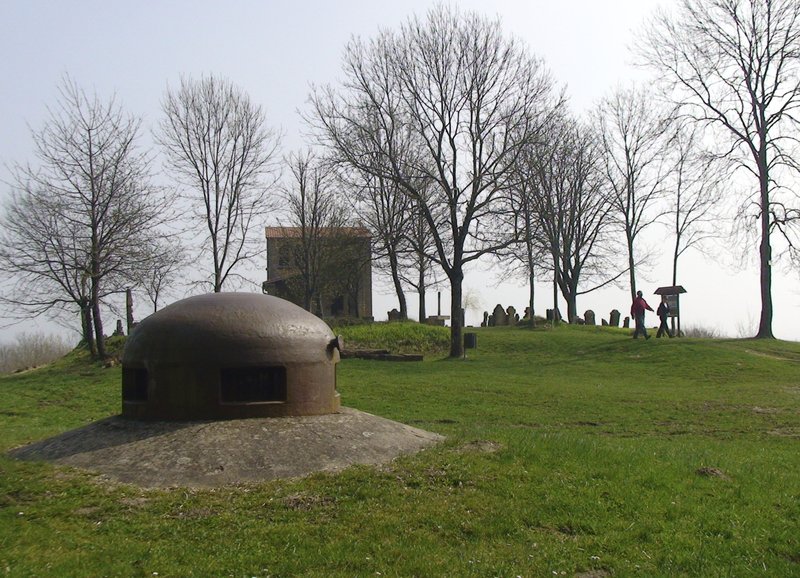FORT DU HACKENBERG, France — In the 1930s the Maginot Line was viewed as a military marvel, an impregnable network of underground fortifications stretching along France's border with Germany - from Belgium to Switzerland - designed to stop the Nazi onslaught and prevent a repeat of the bloody trench warfare of World War I.
But then in 1940, the Germans simply bypassed the vast, hugely expensive network of bastions, bunkers, tunnels and artillery batteries, and the Maginot Lineturned into a metaphor for exaggerated military confidence resulting in disaster.
History buffs and military enthusiasts from around the world now come to tour some of the amazing subterranean forts which began reopening for visitors in the 1980s. Guided tours, including rides on electric trains that once ferried troops and ammunition from fort to fort through tunnel networks, are available from April to October.
Their massive concrete construction helped preserve the fortresses, which still stand guard along the frontier as though frozen in time. Visitors say the sites, often located in mountainous terrain far from urban centers and not marked on road signs, can be hard to find but are worth the effort.
"A lot of people have heard something about it, and they're interested in finding out more, discovering what exactly was this thing called the Maginot Line," said Armand Jacques, a guide at the fort of Schoenenbourg, located about 34 miles north of the French city of Strasbourg.
Jacques said about 40,000people a year take the guided tour of the fort, with Germans accounting for about 40 percent of visitors. He cautioned that visitors need to be dressed warmly, since the underground tunnels and casemates are not heated and average temperatures hover around 54 degrees even in midsummer.
The bastions were largely abandoned after World War II, although some of the more extensive ones - known as "gros ouvrages," literally "large works" - were used by the French army during the Cold War as bombproof shelters and headquarters.
They too were relinquished by the mid-1960s, with some sections auctioned off to the public and the rest left to decay - after the army had welded shut entryways in order to prevent adventurous tourists or curious children from injuring themselves.
Although France was one of the victors of WWI, its military had suffered more than 6 million casualties while fighting in the dangerously exposed trenches along the Western Front. The Maginot Line - named after Andre Maginot, the defense minister who initiated its construction - was intended to act as a deterrent, as well as protect the vulnerable 200-mile border from another German invasion.
"Strategically, the Maginot Line's legacy is mixed," wrote William Allcorn, an expert on fortifications and author of the monograph The Maginot Line 1928-45.
"It effectively protected the borders it was supposed to protect ... but the myth of the Maginot Line engendered a false sense of security and complacency on the part of the French."
Unfortunately, the Maginot Line failed to prevent France's crushing defeat in May 1940, when the invading Nazis simply bypassed it by breaking through Belgian defenses inthe north and trapping the hapless French, British and Belgian armies. The Germans later turned on the line and captured it from the rear, taking more than 500,000 prisoners.
Although not technically part of the Maginot Line, a similar line of fortifications was built along France's border with Italy from the Swiss Alps all the way down to the Mediterranean Sea. Set amid the breathtaking Alpine landscape, several of those forts also are open to the public. One of the most impressive bastions along that section is Fort Sainte-Agnes, spectacularly situated overlooking the seaside town of Menton.
Joseph Richter and his brother Kurt, military history buffs from the German town of Ulm, were riding mountain bikes around the hilly, heavily forested area surrounding Hackenberg, largest of the Maginot forts in northeastern France.
"This is the highlight ofour exploration of WWII fortifications, including the [Nazi-built] Siegfried Line and the Atlantic Wall," Joseph Richter said.
Tourist groups usually arrive by bus from Strasbourg or from other nearby towns. The two-hour tours take in some of the vast underground areas, including the subterranean railway, messes and sleeping quarters for hundreds of troops, and at least one of the combat blocks with its preserved gun emplacements.
A tour of the sprawling Hackenburg facility near the industrial city of Thionville included an ammunitions dump, the power installations, the barracks, the museum of uniforms and weapons, as well as a train ride to one ofthe artillery turrets.
"I always thought of the Maginot Line as being synonymous with military folly, but never expected the fortifications to be so immense and impressive," said Dragan Blagojevic, a visitor from Serbia, after trekking through the Hackenberg tunnels.
VISITING THE MAGINOT LINE:
Between April and October, the forts are open in the afternoon on weekdays and all day Sundays. But it is best to check in advance, as the tours are run by volunteers and opening hours can be irregular. Entrance fees vary, but are about $10 (7 euros) for adults and $5-$7 (4-5 euros) for children. The fortress of Schoenenbourg's extensive Web site at lignemaginot.com offers complete data for the fort and the nearby casemate of Esch. For information on "gros ouvrage" of Hackenberg, the largest Maginot fort, visit maginot-hackenberg.com.
Travel, Pages 58, 59 on 09/27/2009

